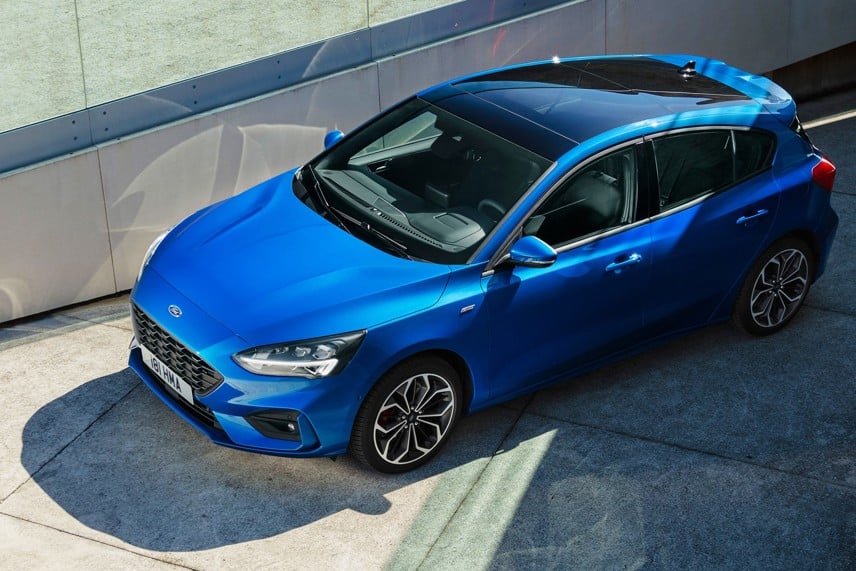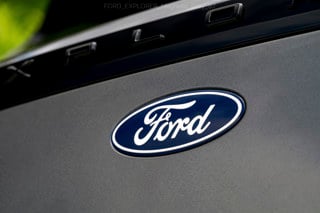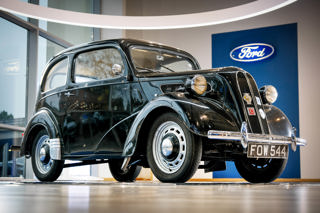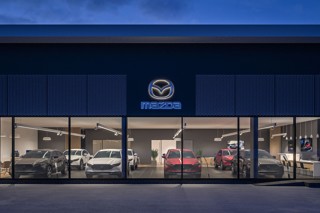Review
"This is the best car we’ve ever built” is a headline-grabbing claim.
It was Ford of Europe vice-president, product development, Joseph Bakaj’s view of the new Focus, but can the car live up to such a grand billing?
In many ways, it can, but it does depend on the criteria used to judge it and the potential buyer’s priorities. It’s certainly the best Ford for connectivity, technology and safety. Arguably, it also offers the best overall package.
Handling, as with all Focuses since the original in 1998, is crisp and precise, ride is smooth and grip is outstanding. The Fiesta ST is probably a better driver’s car, though. Nevertheless, the Focus is agile and responsive, equally at home around town, on motorways or zipping around rural roads.
Styling, as with each previous generation, has undergone a revolution. Some love it, some don’t. We think it looks great from the front three-quarters, but much less so from the rear.
Interior quality is good – a mix of smooth/hard plastics and soft materials, and an improved layout with half the number of physical buttons. It’s up there with the best in its class.
The Focus makes outstanding use of its space, with greater room for front and rear passengers (and boot space) thanks to a longer wheelbase. Shorter overhangs mean exterior dimensions are unchanged.
Away from the passionate proclamations, something more tangible has happened. Ford has reduced the price of key models – by more than £2,200 on the (reintroduced) entry level Style, now from £17,930, and by £840 on the fleet favourite Zetec, at £19,300. The move has positive implications for company car drivers on benefit-in-kind (BIK) tax and fleets for national insurance/corporate tax.
The Titanium remains the same (£21,550), but higher levels of standard equipment offer greater value, says Ford.
All models come as standard with emergency and post-collision braking, lane-keeping warning/aid, intelligent speed assist, hill start assist, electronic stability control and 4.2-inch colour display.
Zetec adds Ford Sync 3 digital radio with 6.5-inch touchscreen, cruise control and front fog lamps with cornering function. Titanium adds LED rear lights, folding door mirrors, front/rear parking sensors, rain sensing wipers, heated front seats, dual-zone aircon, sat-nav and keyless entry/start.
In addition to the two key fleet trims, the £21,370 ST-Line, with its 10mm lowered sports-tuned chassis, unique grille and body styling kit, will appeal to retail and company drivers looking for a sportier model and will be the best seller. It is also the residuals champion, resulting in competitive finance deals.
Topping the range is the £25,250 Vignale, which comes with a head-up display for the first time on a Ford in Europe, plus active park assist which can now handle gradients up to 12 degrees and accommodate kerb parking where allowed.
As well as price reductions, updated and new engines have lower CO2 emissions/better fuel efficiency than those they replace – even when comparing their WLTP CO2MPASS rating to the old engines’ NEDC – while residuals are up 25% over three years/60,000 miles (on average from £6,000 to £7,500).
This triple whammy will result in a sizeable reduction in whole life costs, making the car attractive to fleets, which will account for half of sales.
Pricing guides usually give new cars an RV boost, but underpinning this is the fact that Ford plans to dramatically cut the volume going to rental, from 23% to just 8%.
However, it expects total volumes to remain broadly level with the outgoing model, which means more cars going to true fleet and retail.
The Focus was launched as a five-door hatchback in July, with the new 1.5-litre EcoBlue diesel (70% of corporate sales) and the upgraded 1.0-litre Ecoboost (30%).
The 95PS diesel emits 91g/km, the 120PS 94g/km, both on 16-inch wheels. The petrol (offered with 85PS, 100PS and 125PS) with cylinder deactivation emits from 107g/km. Ford claims the engines are 10-12% more efficient during its own real-world testing – they are certainly far more efficient than its closest rivals.
Both offer an excellent driving experience. The 125PS petrol has bags of power, particularly at higher revs, while the 120PS diesel is punchy at low revs and remains the best option for higher mileage drivers.
Noise levels – engine, road and wind – are noticeably reduced, thanks to improved damping and a stiffer body.
About 20% of the model mix will be the new eight-speed automatic transmission with rotary dial and paddles, a £1,350 premium – the balance will be the six-speed manual.
Phase two, in October, will bring the Wagon (estate), which will account for 10-12% of total sales, plus the higher performance 2.0-litre diesel (112g/km CO2) and 1.5-litre petrol (121g/km). The Focus Active, 30mm higher than the standard car with its own grille style, will arrive at the start of 2019 with sales evenly split between hatch and wagon.
Ford will introduce a mild hybrid next year, with plug-in hybrid and electric versions likely to follow from 2020.
The best Ford ever? That may be a touch hyperbolic, but it is undeniably the best Focus ever.
Stephen Briers
 Q&A: Lisa Brankin, marketing director, Ford Motor Company
Q&A: Lisa Brankin, marketing director, Ford Motor Company
The Focus is such a well known brand in the UK, what challenges do you face with version four?
The biggest challenge is that there’s a lot of new technology. People are familiar with the Focus, so we have to let them know that it’s all-new – we started with a clean sheet of paper – and get across all the new technology, the safety, the new engines and all the other improvements we have made.
We put all our knowledge into this car and we feel it’s our best car yet in terms of competence, technology, functionality and style.
What role will dealers play in the marketing process?
They face the same challenges as us over the newness of the car. Consumers do their research online, but the salesperson is still an important part of the process and they have to succinctly convey the key points and also the elements that are most relevant to the customer. Dealers saw the car in April at a preview event and in July they will drive it and be trained on it.
What response have you had from dealers?
We’ve had really positive feedback so far – they are impressed with the step forward in the new technology, the new styling and the new opportunity offered by the Active.
Why did you decide to reduce the price and reintroduce the entry-level Style?
The price reductions make it closer to the real-life price, so there will be less discounting versus the old car. We looked at all the specifications and felt that the Style was the best entry point into the market.
We are also restricting the rental volumes (from 23% on the current model to 8% on the new car). This signals to user-choosers that we are a credible product so the whole-life cost position will be improved. And we have leveraged our residual value efficiencies.
The Focus is a once-in-a-lifetime opportunity to go to the market with a proposition that challenges the premium brands.
Factsheet
Price: £17,930 – £25,250
Engines: 1.0, 1.5,
2.0-litre
Performance: 0-62mph
8.3-12.0 seconds;
top speed
110-137mph
Gearbox: 6sp/8sp auto
Fuel efficiency: 47.1-78.5mpg
Emissions: 96-138g/km CO2



















Login to comment
Comments
No comments have been made yet.